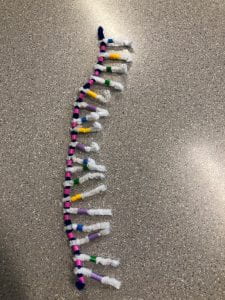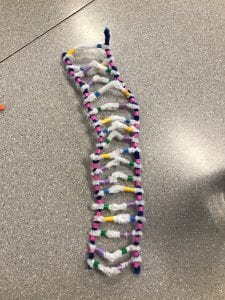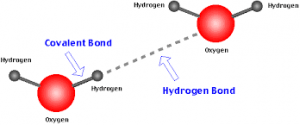DNA and Protein Synthesis
DNA also is known as Deoxyribonucleic acid is a molecule composed of two chains that coil around each other to form a double helix carrying genetic instructions for the development, functioning, growth and reproduction of all known organisms and many viruses. DNA is the control molecule of life. DNA has three major functions: Controls cellular activities (including reproduction), carries a “code” that contains genetic instructions, DNA from male/ female together become genetic information in sexual reproduction. The Structure of DNA was determined by James Watson and Francis Crick in the early 1950s. DNA is a polynucleotide; each nucleotide (nucleotide is a compound consisting of a nucleoside linked to a phosphate group. Nucleotides form the basic structural unit of nucleic acids such as DNA) (Fun fact about nucleotides is that Chemo molecules have a similar shape to nucleotides) is a complex of three subunits—phosphoric acid (phosphate), a pentose sugar (deoxyribose), and a nitrogen-containing base. There are four possible bases: two are purines with a double ring, and two are pyrimidines with a single ring. DNA has 2 strands, and the 2 strands twist around one another in the form of a double helix. (Appears twisted as we see in this  photo) —————–>
photo) —————–>
The strands are held together by hydrogen bonding between the bases: A pairs with T by forming two hydrogen bonds, and G pairs with C by forming three hydrogen bonds, or vice versa. This is called complementary base pairing. It is important that A pairs with T and not another Purine/ Pyrimidine as that won’t create hydrogen bonds. COMPLEMENTARY BASE PAIRING: new nucleotides move in to pair up with bases of each template strand of DNA. These new nucleotides are always floating around within the nucleoplasm. ——–>
——–> 
(in this photo we observe 2 sugar-phosphate backbones, complimentary paired before they were unpaired nucleotides)
The bases in DNA pair in such a way that the phosphate-sugar groups are oriented in different directions. This means that the strands of DNA end up running antiparallel to one another, with the 3 ́ end of one strand opposite the 5 ́ end of the other strand. There are leading strands and lagging strands. The leading strand continues as DNA “unzips”, whereas the lagging strand forms fragments as the DNA unzips, ligase is used to glue the fragments. Lagging strand and Leading strand run in opposite directions as they are antiparallel to one another.
These models help to model the DNA structure as we can see double helix bonds, antiparallel to one another, complementary base pairing. Some changes we can make to make the structure more accurate is changing the sizes of the beads used to make it more realistic. The white pipe cleaner to represent hydrogen bonds could be thinner as hydrogen bonds are weak. DNA is extremely long so the size and is not accurate however it would be almost impossible to create such DNA to be that long.
DNA replication is one of the many actions of DNA. DNA replication is when exact copies of DNA are produced. The double-stranded structure of DNA helps replication because each strand can serve as a template for the formation of a complementary strand. DNA replications undergo the following steps unwinding, complementary base pairing, and joining. DNA replication must occur before a cell can divide. Each new double helix is composed of an old (parental),strand and a new (daughter) strand. 
As we see in this photo parental DNA is unzipped and the new nucleotides are now pairing with those in parental strand.
There are 3 steps to make DNA replication:
- Unwinding. The two strands that makeup DNA unwind and “unzip” (i.e., the weak hydrogen bonds between the paired bases break). A special enzyme called helicase causes the molecule to unwind.
2. Complementary base pairing. New complementary nucleotides, always present in the nucleus, fit into place by the process of complementary base pairing.
3. Joining. The complementary nucleotides join to form new strands. This step is carried out by an enzyme called DNA polymerase.
As we see in this photo when synthesis is complete there will be 2 identical double helix strands. (Twisted shape)
(complimentary base pairing)
We showed the phosphate bonds and the nucleotides joining at the same time. We can improve this activity by showing how to unzip the stands differently as this is inaccurate. As well as the sizing is inaccurate. Hydrogen bonds can be represented differently perhaps we can draw lines with a black sharpie on them to show that they are weaker.
As we see in this photo hydrogen bonds are represented using a dotted line we could also draw this on the white pipe cleaners.

